Wenyi Wang
How to Correctly do Semantic Backpropagation on Language-based Agentic Systems
Dec 04, 2024Abstract:Language-based agentic systems have shown great promise in recent years, transitioning from solving small-scale research problems to being deployed in challenging real-world tasks. However, optimizing these systems often requires substantial manual labor. Recent studies have demonstrated that these systems can be represented as computational graphs, enabling automatic optimization. Despite these advancements, most current efforts in Graph-based Agentic System Optimization (GASO) fail to properly assign feedback to the system's components given feedback on the system's output. To address this challenge, we formalize the concept of semantic backpropagation with semantic gradients -- a generalization that aligns several key optimization techniques, including reverse-mode automatic differentiation and the more recent TextGrad by exploiting the relationship among nodes with a common successor. This serves as a method for computing directional information about how changes to each component of an agentic system might improve the system's output. To use these gradients, we propose a method called semantic gradient descent which enables us to solve GASO effectively. Our results on both BIG-Bench Hard and GSM8K show that our approach outperforms existing state-of-the-art methods for solving GASO problems. A detailed ablation study on the LIAR dataset demonstrates the parsimonious nature of our method. A full copy of our implementation is publicly available at https://github.com/HishamAlyahya/semantic_backprop
FACTS: A Factored State-Space Framework For World Modelling
Oct 28, 2024



Abstract:World modelling is essential for understanding and predicting the dynamics of complex systems by learning both spatial and temporal dependencies. However, current frameworks, such as Transformers and selective state-space models like Mambas, exhibit limitations in efficiently encoding spatial and temporal structures, particularly in scenarios requiring long-term high-dimensional sequence modelling. To address these issues, we propose a novel recurrent framework, the \textbf{FACT}ored \textbf{S}tate-space (\textbf{FACTS}) model, for spatial-temporal world modelling. The FACTS framework constructs a graph-structured memory with a routing mechanism that learns permutable memory representations, ensuring invariance to input permutations while adapting through selective state-space propagation. Furthermore, FACTS supports parallel computation of high-dimensional sequences. We empirically evaluate FACTS across diverse tasks, including multivariate time series forecasting and object-centric world modelling, demonstrating that it consistently outperforms or matches specialised state-of-the-art models, despite its general-purpose world modelling design.
Agent-as-a-Judge: Evaluate Agents with Agents
Oct 14, 2024



Abstract:Contemporary evaluation techniques are inadequate for agentic systems. These approaches either focus exclusively on final outcomes -- ignoring the step-by-step nature of agentic systems, or require excessive manual labour. To address this, we introduce the Agent-as-a-Judge framework, wherein agentic systems are used to evaluate agentic systems. This is an organic extension of the LLM-as-a-Judge framework, incorporating agentic features that enable intermediate feedback for the entire task-solving process. We apply the Agent-as-a-Judge to the task of code generation. To overcome issues with existing benchmarks and provide a proof-of-concept testbed for Agent-as-a-Judge, we present DevAI, a new benchmark of 55 realistic automated AI development tasks. It includes rich manual annotations, like a total of 365 hierarchical user requirements. We benchmark three of the popular agentic systems using Agent-as-a-Judge and find it dramatically outperforms LLM-as-a-Judge and is as reliable as our human evaluation baseline. Altogether, we believe that Agent-as-a-Judge marks a concrete step forward for modern agentic systems -- by providing rich and reliable reward signals necessary for dynamic and scalable self-improvement.
Perception-Oriented Video Frame Interpolation via Asymmetric Blending
Apr 10, 2024



Abstract:Previous methods for Video Frame Interpolation (VFI) have encountered challenges, notably the manifestation of blur and ghosting effects. These issues can be traced back to two pivotal factors: unavoidable motion errors and misalignment in supervision. In practice, motion estimates often prove to be error-prone, resulting in misaligned features. Furthermore, the reconstruction loss tends to bring blurry results, particularly in misaligned regions. To mitigate these challenges, we propose a new paradigm called PerVFI (Perception-oriented Video Frame Interpolation). Our approach incorporates an Asymmetric Synergistic Blending module (ASB) that utilizes features from both sides to synergistically blend intermediate features. One reference frame emphasizes primary content, while the other contributes complementary information. To impose a stringent constraint on the blending process, we introduce a self-learned sparse quasi-binary mask which effectively mitigates ghosting and blur artifacts in the output. Additionally, we employ a normalizing flow-based generator and utilize the negative log-likelihood loss to learn the conditional distribution of the output, which further facilitates the generation of clear and fine details. Experimental results validate the superiority of PerVFI, demonstrating significant improvements in perceptual quality compared to existing methods. Codes are available at \url{https://github.com/mulns/PerVFI}
Towards a Robust Retrieval-Based Summarization System
Mar 29, 2024
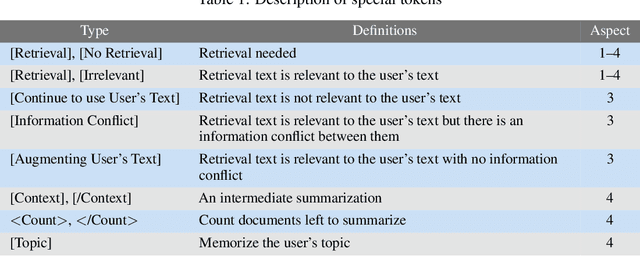


Abstract:This paper describes an investigation of the robustness of large language models (LLMs) for retrieval augmented generation (RAG)-based summarization tasks. While LLMs provide summarization capabilities, their performance in complex, real-world scenarios remains under-explored. Our first contribution is LogicSumm, an innovative evaluation framework incorporating realistic scenarios to assess LLM robustness during RAG-based summarization. Based on limitations identified by LogiSumm, we then developed SummRAG, a comprehensive system to create training dialogues and fine-tune a model to enhance robustness within LogicSumm's scenarios. SummRAG is an example of our goal of defining structured methods to test the capabilities of an LLM, rather than addressing issues in a one-off fashion. Experimental results confirm the power of SummRAG, showcasing improved logical coherence and summarization quality. Data, corresponding model weights, and Python code are available online.
Data Interpreter: An LLM Agent For Data Science
Mar 12, 2024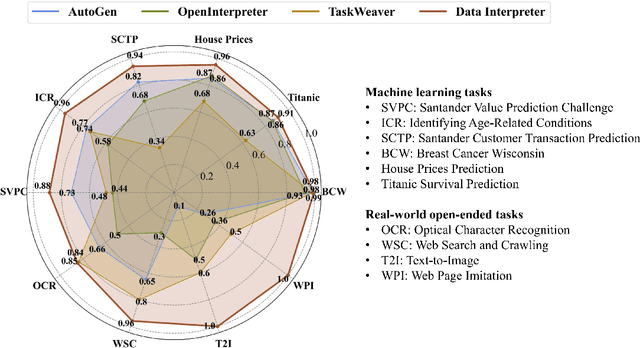

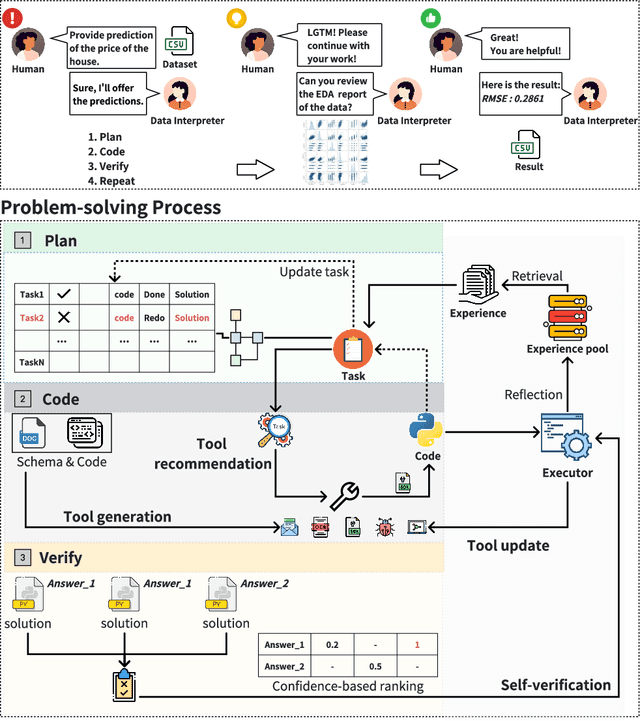

Abstract:Large Language Model (LLM)-based agents have demonstrated remarkable effectiveness. However, their performance can be compromised in data science scenarios that require real-time data adjustment, expertise in optimization due to complex dependencies among various tasks, and the ability to identify logical errors for precise reasoning. In this study, we introduce the Data Interpreter, a solution designed to solve with code that emphasizes three pivotal techniques to augment problem-solving in data science: 1) dynamic planning with hierarchical graph structures for real-time data adaptability;2) tool integration dynamically to enhance code proficiency during execution, enriching the requisite expertise;3) logical inconsistency identification in feedback, and efficiency enhancement through experience recording. We evaluate the Data Interpreter on various data science and real-world tasks. Compared to open-source baselines, it demonstrated superior performance, exhibiting significant improvements in machine learning tasks, increasing from 0.86 to 0.95. Additionally, it showed a 26% increase in the MATH dataset and a remarkable 112% improvement in open-ended tasks. The solution will be released at https://github.com/geekan/MetaGPT.
Language Agents as Optimizable Graphs
Feb 27, 2024



Abstract:Various human-designed prompt engineering techniques have been proposed to improve problem solvers based on Large Language Models (LLMs), yielding many disparate code bases. We unify these approaches by describing LLM-based agents as computational graphs. The nodes implement functions to process multimodal data or query LLMs, and the edges describe the information flow between operations. Graphs can be recursively combined into larger composite graphs representing hierarchies of inter-agent collaboration (where edges connect operations of different agents). Our novel automatic graph optimizers (1) refine node-level LLM prompts (node optimization) and (2) improve agent orchestration by changing graph connectivity (edge optimization). Experiments demonstrate that our framework can be used to efficiently develop, integrate, and automatically improve various LLM agents. The code can be found at https://github.com/metauto-ai/gptswarm.
Trillion Parameter AI Serving Infrastructure for Scientific Discovery: A Survey and Vision
Feb 05, 2024
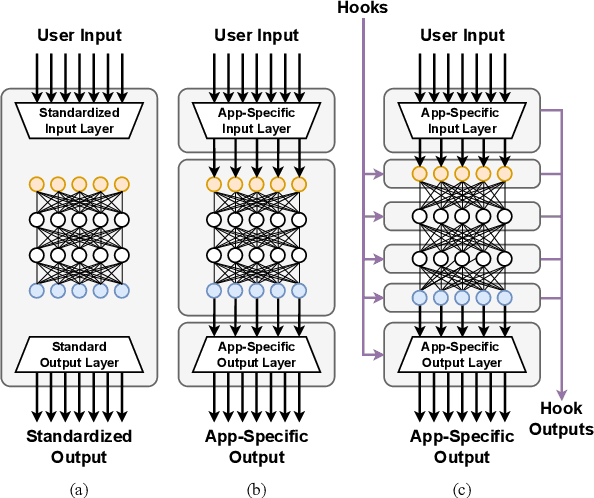
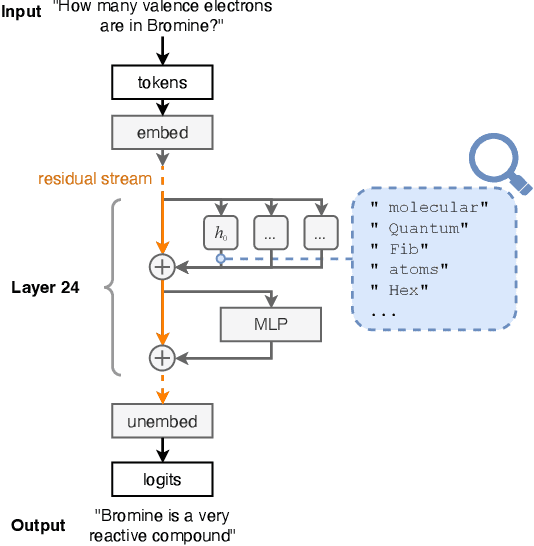
Abstract:Deep learning methods are transforming research, enabling new techniques, and ultimately leading to new discoveries. As the demand for more capable AI models continues to grow, we are now entering an era of Trillion Parameter Models (TPM), or models with more than a trillion parameters -- such as Huawei's PanGu-$\Sigma$. We describe a vision for the ecosystem of TPM users and providers that caters to the specific needs of the scientific community. We then outline the significant technical challenges and open problems in system design for serving TPMs to enable scientific research and discovery. Specifically, we describe the requirements of a comprehensive software stack and interfaces to support the diverse and flexible requirements of researchers.
AccFlow: Backward Accumulation for Long-Range Optical Flow
Aug 25, 2023Abstract:Recent deep learning-based optical flow estimators have exhibited impressive performance in generating local flows between consecutive frames. However, the estimation of long-range flows between distant frames, particularly under complex object deformation and large motion occlusion, remains a challenging task. One promising solution is to accumulate local flows explicitly or implicitly to obtain the desired long-range flow. Nevertheless, the accumulation errors and flow misalignment can hinder the effectiveness of this approach. This paper proposes a novel recurrent framework called AccFlow, which recursively backward accumulates local flows using a deformable module called as AccPlus. In addition, an adaptive blending module is designed along with AccPlus to alleviate the occlusion effect by backward accumulation and rectify the accumulation error. Notably, we demonstrate the superiority of backward accumulation over conventional forward accumulation, which to the best of our knowledge has not been explicitly established before. To train and evaluate the proposed AccFlow, we have constructed a large-scale high-quality dataset named CVO, which provides ground-truth optical flow labels between adjacent and distant frames. Extensive experiments validate the effectiveness of AccFlow in handling long-range optical flow estimation. Codes are available at https://github.com/mulns/AccFlow .
FastLLVE: Real-Time Low-Light Video Enhancement with Intensity-Aware Lookup Table
Aug 13, 2023Abstract:Low-Light Video Enhancement (LLVE) has received considerable attention in recent years. One of the critical requirements of LLVE is inter-frame brightness consistency, which is essential for maintaining the temporal coherence of the enhanced video. However, most existing single-image-based methods fail to address this issue, resulting in flickering effect that degrades the overall quality after enhancement. Moreover, 3D Convolution Neural Network (CNN)-based methods, which are designed for video to maintain inter-frame consistency, are computationally expensive, making them impractical for real-time applications. To address these issues, we propose an efficient pipeline named FastLLVE that leverages the Look-Up-Table (LUT) technique to maintain inter-frame brightness consistency effectively. Specifically, we design a learnable Intensity-Aware LUT (IA-LUT) module for adaptive enhancement, which addresses the low-dynamic problem in low-light scenarios. This enables FastLLVE to perform low-latency and low-complexity enhancement operations while maintaining high-quality results. Experimental results on benchmark datasets demonstrate that our method achieves the State-Of-The-Art (SOTA) performance in terms of both image quality and inter-frame brightness consistency. More importantly, our FastLLVE can process 1,080p videos at $\mathit{50+}$ Frames Per Second (FPS), which is $\mathit{2 \times}$ faster than SOTA CNN-based methods in inference time, making it a promising solution for real-time applications. The code is available at https://github.com/Wenhao-Li-777/FastLLVE.
 Add to Chrome
Add to Chrome Add to Firefox
Add to Firefox Add to Edge
Add to Edge